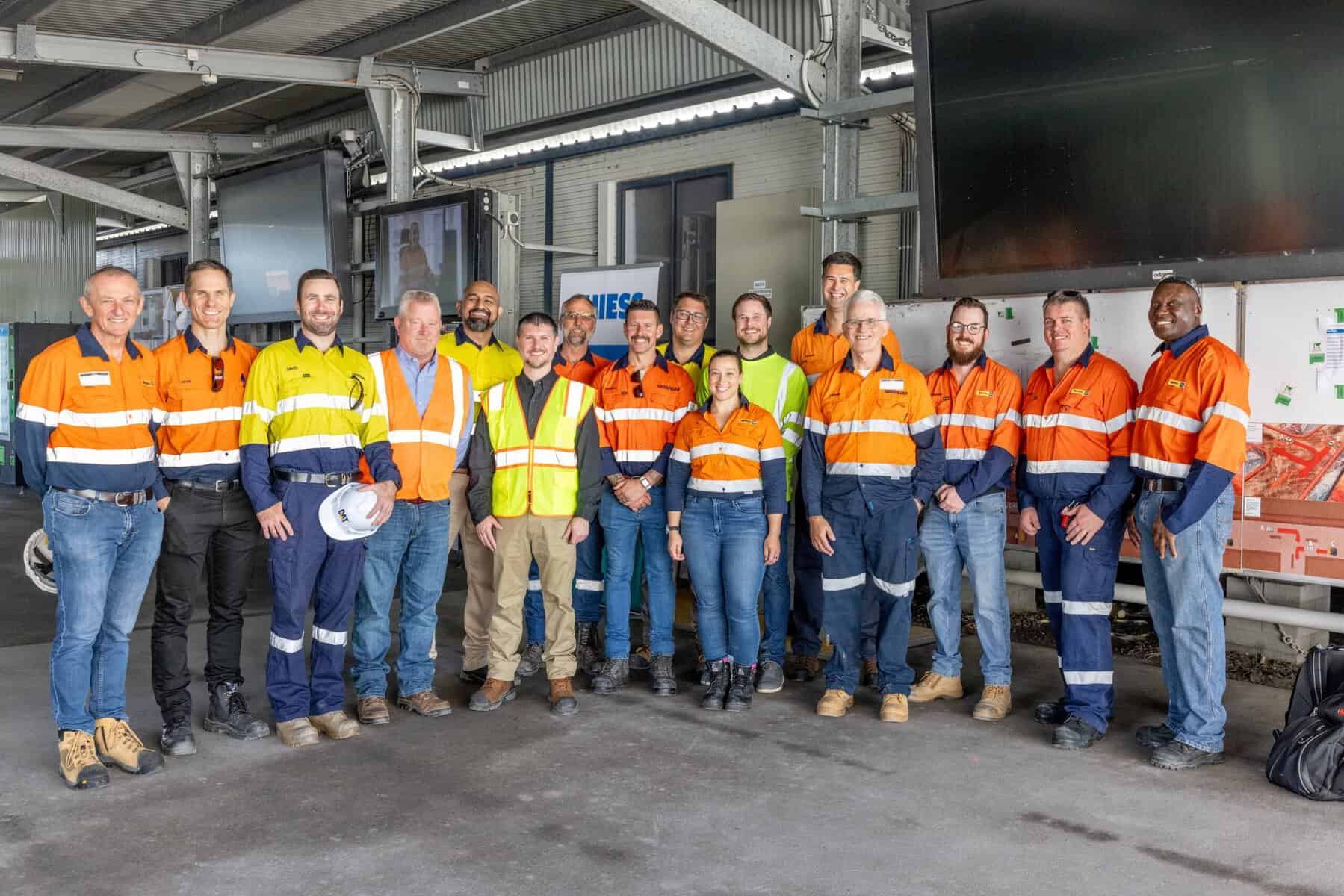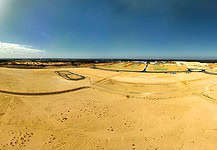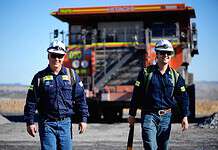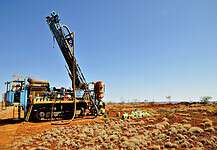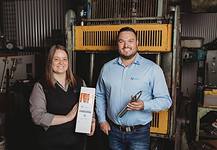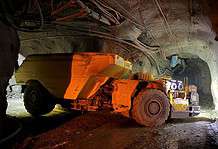All images: Grange Resources
BY AMY BLOM
HAVING wrapped up a successful year that saw a number of milestones including the celebration of 50 years since operations began at Savage River in Tasmania and record pellet premiums, Grange Resources’ sights were now set on increased production and extending mine life.
This is the year that could decide the future of the Savage River mine, according to Grange Resources general manager of operations Ben Maynard.
The Savage River magnetite iron ore mine in Tasmania’s northwest, is a long-life mining asset, and is Grange’s principal operation.
At Port Latta, on the northwest coast of Tasmania, Grange owns a downstream pellet plant and port facility producing more than 2 million tonnes of premium quality iron ore pellets annually.
Having celebrated 50 years since mining operations began at Savage River last year, the miner will spend this year on expansions projects, including continuing to progress its underground development project at Savage River, as well as conducting investigations into Centre Pit and Long Plains.
“2019 is probably the year that is going to give us a good indication of which way it will go; I think by the time we’ve got through what we have planned this year, that will be giving us a good indication as to whether the underground is a true, viable option for the Savage River operation,” Mr Maynard said.
“I’m optimistic and I think you have to be in this game – we’re certainly driving out plans fairly hard and we think we have some real opportunities here.”
The underground project has the potential to add additional resources to the mine life, which was currently beyond 2030, with access to the ore body at greater depth.
Mr Maynard said Grange was continuing to progress the diamond drilling program currently underway to investigate the ability to access the ore body in North Pit through underground development.
“We’re still going through the testing – we’ve done the initial phase – and we’re working through and following up with the testing of our diamond drill core,” he said.
“That seems to be showing us that the orebody is continuous at depth.
“We’ve got a bit to do to square that up and get those results out, but it’s certainly positive at this stage.”
The deep diamond holes began in Q3 2018 and combined downhole geophysics, hydrogeological assessment, laboratory testing of diamond drill core and modelling for input feasibility studies.
Since then, Grange’s board has approved further expenditure of $15 million to establish an exploration decline alongside the open pit.
Mr Maynard said this would be implemented in 2019, and would allow further testing of the orebody at greater depth and progression of the feasibility study.
“We’ve started some preliminary works on site, which is exciting,” he said.
“While still at an early stage, there is potential to reduce the operational costs in the long term for underground operation and reduce the amount of waste stripping from the open pits; this will be studied through the feasibility project.”
Next up for Grange was Centre Pit, which has been mined in iterations over the life of the Savage River operation.
Mr Maynard said the current reserve was about 8 million tonnes, but Grange were reviewing the economics of assessing the orebody to allow ore blending with the high-grade North Pit ore.
He said work was progressing on the feasibility study for Centre Pit.
“The surface diamond drilling program has progressed with the diamond drilling focussed on geotechnical data collection informing slope stability and increasing confidence in the geological model,” Mr Maynard said.
Finally for Savage River, Grange was working on a prefeasibility study of the Long Plains deposit to determine whether the ore source formed part of the life of mine strategy.
“While the deposit is smaller than the main Savage River ore body, it will be able to supplement ore feed into the existing infrastructure,” Mr Maynard said.
Long Plains is a magnetite resource totalling 107mt at 33 per cent Davis Tube Recovery, 8km south of the current mine lease.
Mr Maynard said aside from work on extending mine life and increasing production, Grange was also continuing research and development to improve safety and production at the mine.
He said Grange was currently looking to build a high-wall scaler, which could remove the need for manual scalers to walk down walls, and dramatically improve safety.
Grange also operates a downstream pellet plant and port facility producing more than 2 million tonnes of premium quality iron ore pellets annually.
A Productive Year
While the scene may be set for a busy year ahead, Grange was well-placed, having just wrapped up a successful 2018.
“As a result of continued demand from China for higher-quality, low impurity products following ongoing environmental restrictions and strong steel margins, Grange has received record pellet premiums above the 62 per cent iron fines lower quality products,” Mr Maynard said.
Pellet production continued to increase in the December quarter to 517,000 tonnes compared to 437,000 tonnes in the September quarter.
While pellet sales did decrease in that period, going from 499,000 tonnes to 466,000 tonnes, Mr Maynard said that was expected, and was confident in a sustained demand from the Chinese market.
“I don’t know that we’ll continue to see those heights, but we certainly think that there’s going to be sustained demand for pellets,” Mr Maynard said.
“There has been a significant change in the market in China; the Chinese Government has been really strict now on air emissions – they’re chasing blue sky, they want to improve their air quality, and they’re being quite directive now about how often a plant can run and how many lines can run depending on its air emissions.
“So the prescription of the government now is really driving the need for these high-quality, lower impurity inputs.
“If you use our pellet in your steel-making furnace, you’ll create less dust, you’ll create less emissions, you’ll get a higher yield of iron, and you’ll require less maintenance on your furnace because you’ll get a better quality input.”
In another 2018 highlight, Grange completed commissioning of the South Deposit Tails Storage Facility in November.
Mr Maynard said the facility would provide tailings storage for the current Life of Mine, and mitigate some of the legacy and environmental issues on the site.
He said this included dealing with the pyrite that had been dumped in the early days of mining at Savage River.
As an iron sulphide, when pyrite is exposed to air and water, it can react to create sulphuric acid.
“When they mined the first part of the operation in the first 20 or 30 years, there wasn’t the understanding of acid rock drainage and acid rock generation that there is today,” Mr Maynard said.
“They wouldn’t classify the material or identify where the pyrite was and treat that separately, so there were a couple of legacy issues from the very start of the operation where there’s old tails that were exposed to air that have pyrite in them.”
Mr Maynard said storage methods had changed at Savage River over time, but the South Deposit Tail Storage facility was designed not just for new tail storage, but also to capture some of the old sweeps from the old dumps.
“We’ve cleaned up Savage River – it was a dead creek back in the 1990s, but now we have white bait and other fish running, however there were some areas where metal and acid was coming from these old dumps, so the facility now captures the run-off from those areas,” Mr Maynard said.
“Now there’s clean water being driven down-stream.”
Beyond Savage River
While Grange’s operations consisted principally of owning and operating Savage River, it was also a majority joint venture partner in a major magnetite development project at Southdown, near Albany in WA.
SRT Australia, which is owned by Japan’s Sojitz Corporation and Kobe Steel, had the remaining 30 per cent stake in the project.
According to Mr Maynard, the process of seeking a strategic investor or investors for the project was ongoing and alternative options were being explored to assist in the implementation of the project.
“The Southdown magnetite project is an advanced project with more than 1.2 billion tonnes of high-quality mineral resources, including ore reserves of 388 million tonnes,” Mr Maynard said.
“The project has been designed to produce 10 million tonnes per annum of high-grade, quality magnetite concentrate at 69.5 per cent iron.
“This is expected to command a premium price in the iron ore pellet feed market over a potential mine life of around 30 years.”


